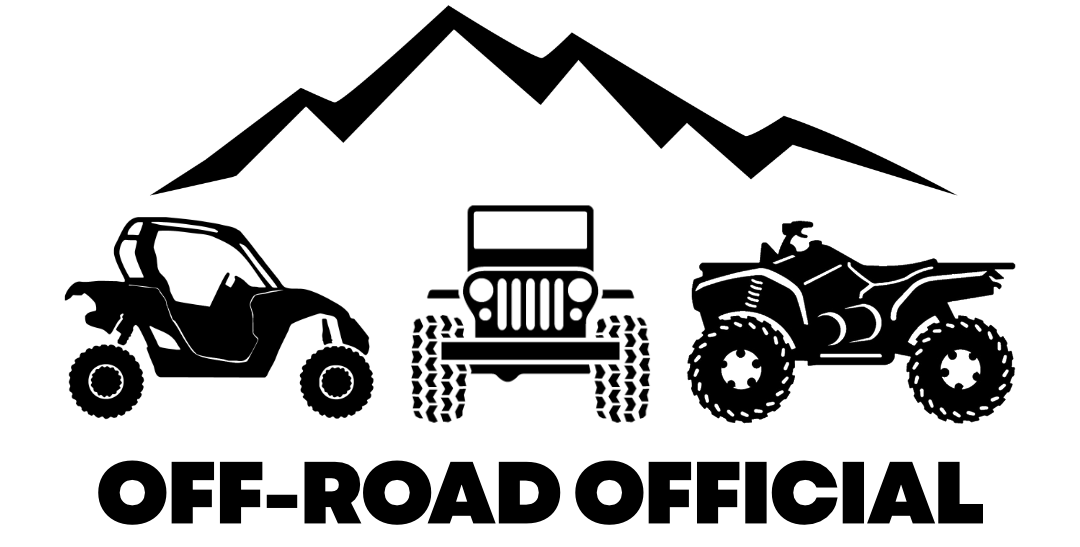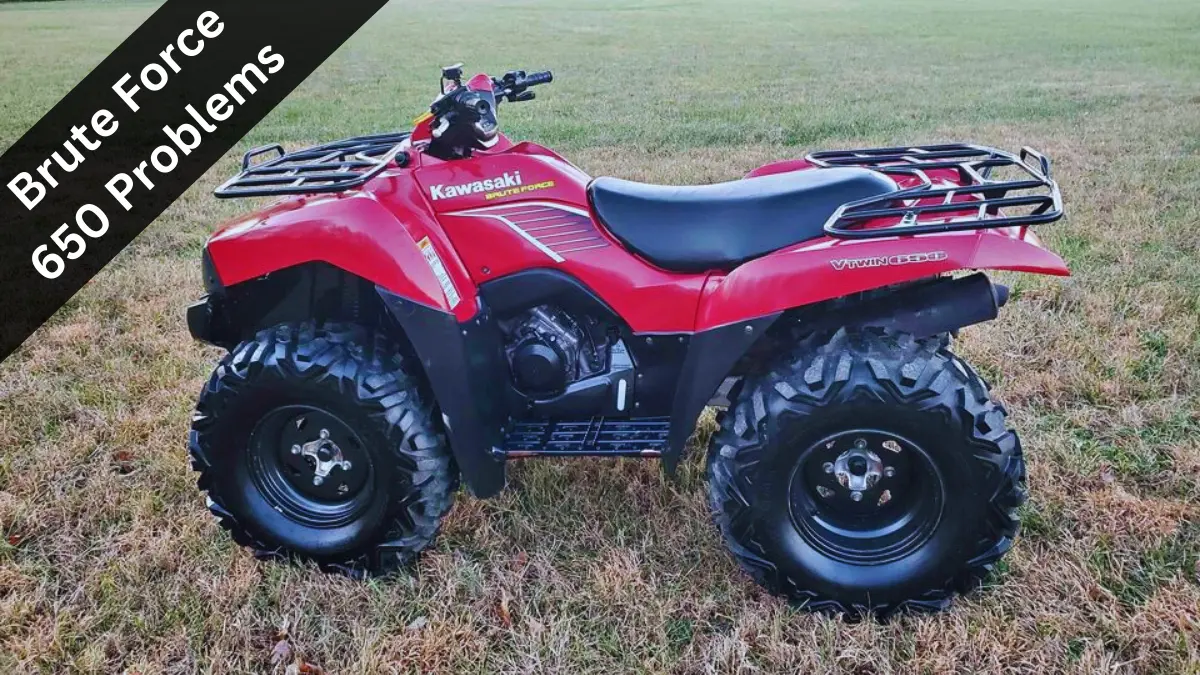You might be surprised to hear that many Brute Force 650 owners claim it to be superior to the slightly upgraded Brute Force 750 model.
This model has been around for many years, always being right up there with some of the best overall ATVs in the industry quality-wise.
But as great as this model is, even its staunchest supporters will point out a number of common problems known to trouble this otherwise solid quad.
The most common problems with this model include:
- Airbox Flooding
- Air Filter Clogging
- Overheating
- Valves Causing Compression Loss
- Carburetor Problems
- Transmission Problems
This guide will detail each of these common problems, along with likely causes and proven fixes.
Airbox Flooding
The most commonly complained about issue with older Brute Force 650 models is the airbox being prone to flooding with mud or water while riding.
This is also a big problem with the Brute 750’s.
The air intake is located just under the handlebars, and the big engine in this model is known for sucking in loads of air.
This leads to any water that might find its way airborne when you hit puddles or cross the shallowest water will end up being sucked into the airbox, potentially flooding it.
Fixes
Installing an aftermarket airbox cover that works to protect it from any airborne water or mud is the most popular option, and will prevent most of the problems.
The other option is snorkeling your airbox to extend the intake higher, which helps to overcome the issue as well.
Air Filter Clogging
The Kawasaki Brute Force 650 engine seems to like a lot of air, so the air filters are constantly hit with dirt, dust, and other debris.
This makes them prone to clogging after even one very dusty ride, and a review of the Brute Force 300 shows it to affect that model also.
Fixes
Be sure and clean your air filter after any long ride to ensure it can function properly and doesn’t remain coated in dust and debris.
When you go to reinstall it after cleaning it, a best practice is to apply some grease to the bottom of the air filter to help ensure a tight seal.
Overheating
Overheating can be another problem in these models, and generally occurs thanks to one of the following:
- Radiator clogged with debris
- Radiator fan doesn’t start in time
- Coolant system forms an air pocket
- Head gasket blown
Radiator Clogged With Debris
These models excel off-road, and if you’re constantly riding through mud, dirt trails, sand, or high grass – much of that kind of debris will wind up caked on and around your radiator.
This will lead to overheating, so be sure to clean your radiator fins after any long or muddy rides to be sure they’re free of debris.
You should also take off your grill and clean it, as you’ll be surprised how much dirt and mud can find its way into the spaces it covers.
Radiator Fan Doesn’t Start In Time
Brute Force 650 models are factory-set within their ECU so that the radiator fan won’t kick on until the engine reaches a temperature of 200+ degrees.
Many times, especially on warm days or at high altitude, this doesn’t leave the fan enough time to cool the engine enough to keep it out of the overheating danger zone.
If you want to prevent overheating, your best bet is to have your ECU tuned – with most tunes reprogramming the fan to kick on at lower engine temps.
Either method should help prevent overheating.
Coolant System Forms Air Pocket
Yet another cause of overheating is when an air pocket forms in your coolant system, which can happen any time the engine overheats.
An air pocket will prevent coolant from pumping properly, leading to a cycle of continued overheating until it is bled from your system.
You’ll need to follow a process of bleeding this air until you eventually see any bubbling in the radiator fill area subside, signifying the air pocket is gone.
If you experience bubbling that just won’t stop while doing this, a head gasket may be blown.
Head Gasket Blown
Overheating can cause a head gasket to blow, which will then lead to recurring overheating.
Grab a heat gasket test kit to confirm whether this is your problem, and throw in a replacement gasket if so.
Valves Causing Compression Loss
The intake valves used in the Brute Force models are not regarded for their quality, but a lack of maintenance can lead to them causing issues as well.
If you experience any of the following, your intake valves may be to blame:
- Stalling
- Backfiring
- Rough idling
- Hard starting
When dirt and debris gets sucked into the motor, it will wear on the intake valves – which is yet another reason to be constantly cleaning your air filter.
Wear on the intake valves will lead to them tightening over time, which will lead to compression loss and any of the symptoms above.
Fixes
When these issues arise, checking your valve clearances should be your first line of action. If the valves aren’t at their proper clearances, you’ll need to adjust them back to alleviate these problems.
You should also be proactive and replace the intake valves every two years to help avoid issues.
Carburetor Problems
Like the Brute Force 300 models, many older Brute Force 650 models are equipped with a carburetor rather than EFI.
The stock carbs in these quads are known to cause issues, including:
- Engine surging
- Engine won’t start or run without the choke
- Engine sputtering or stalling while at idle
These carb issues are common and are usually caused by the carb clogging or becoming gummed up with grit and grime over time.
The pilot jets within the carb are the most prone to this. If they become plugged, the carb won’t be able to fuel correctly.
Fixes
You need to thoroughly clean your carburetor to alleviate these issues, making sure to pay close attention to the jets inside.
Remove and disassemble your carb to do this, and then remove the jets within it as well.
Inspect them for debris or corrosion. A rule of thumb is if you can’t hold them up and see all the way through them once removed, they’re likely clogged.
Stick a fine wire through them to remove any clogging and then spray through them with WD-40 Carburetor Spray.
A clean carburetor with clean jets will fix many engine and idling issues in this model.
Transmission Problems
Tranny problems in the Brute Force 650 are also common, with the following symptoms a sign you have a problem:
- Grinding when attempting to shift gears
- Grinding noise directly after a gear shift
- Slipping out of gear
- Gear shift feeling stuck when attempting to shift
There are two main causes of these issues – the shift linkage and the motor mount bolts.
Shift Linkage Problem
The shift linkage is prone to moving to an incorrect position due to the lock nuts that hold it in place vibrating loose.
When this happens, you’ll experience the symptoms above and need to adjust the shift linkage back into it’s proper position to alleviate them.
To do this, locate your shift linkage and fully loosen the two lock nuts.
Then rotate the turnbuckle to shift it left or right depending upon which direction it seems to have moved away from.
You can test whether the position is right by shifting gears and looking at the gear indicator lights to ensure they match up correctly.
Once back in a good place, lock the two nuts back in place and you should be all set.
Motor Mount Bolts
The motor mount bolts are prone to loosening causing gear issues, so check those out as well.
Be sure that each bolt is fully tightened, with a best practice being to tighten them well past their recommended torque settings in the owner’s manual for good measure.
Final Thoughts
The Brute Force 650 is right up there with the Brute Force 750 as one of the highest-performance utility ATV models out there.
And while it’s about as dependable and durable as they come, owners may still encounter some common issues.


